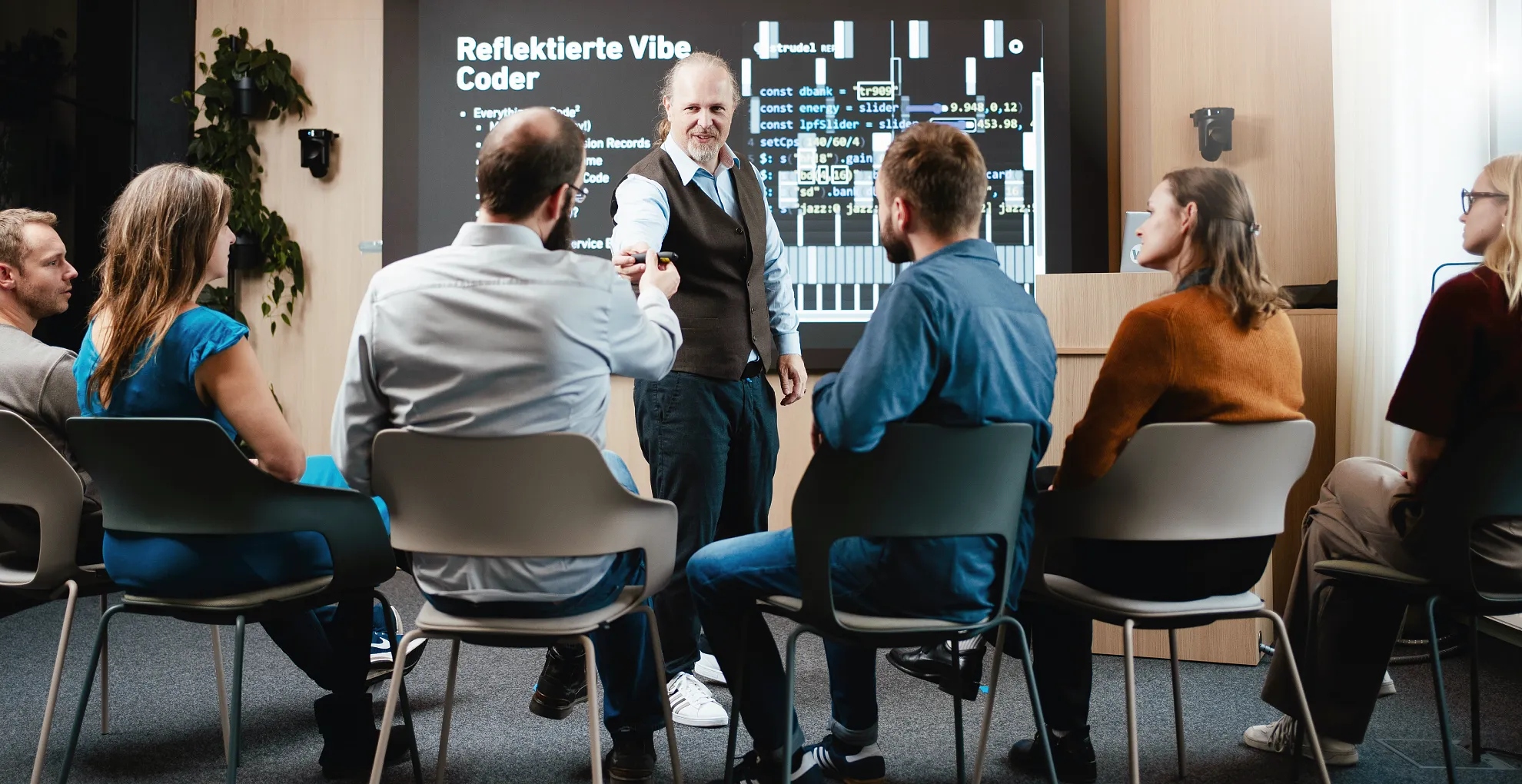Treffen Sie uns auf einem Event
Hier finden Sie eine Übersicht der Konferenzen, MeetUps und User Groups, auf denen Sie uns treffen können.

Wir entwickeln Ihre Software. Ihre Prozesse. Und Ihre Organisation.
Individuell. Genau passend für Ihr Geschäftsmodell.
Seit 1994 beraten wir Unternehmen und Organisationen mit der festen Überzeugung: wo Entwicklung stattfindet, wird Entfaltung möglich. Wir verstehen Entwicklung mehrdimensional: technisch, systemisch, organisational und persönlich.
Uns zeichnet tiefgreifendes Fachwissen aus, das wir mit einer empathischen Haltung in jeglicher Beziehung verbinden. Wir sind nah an unseren Kunden. Ihre Herausforderungen lösen wir individuell, indem wir die passenden Methoden anwenden und dabei ein profundes Branchenwissen einsetzen.
viadee – entdecken entwickeln entfalten
Im Mittelpunkt unserer Arbeit als Berater:innen stehen die Menschen. Wir sind davon überzeugt, dass Wertschätzung die Grundlage für außerordentliche Team-Leistungen ist. In Verbindung mit dem Einsatz moderner Technologien und Methoden schaffen wir so wirksame Lösungen.
Wir tauchen tief ein in Ihre Herausforderungen, um eine passgenaue Lösung zu entwickeln. Wir sind neugierig und offen für unkonventionelle Ideen. Dabei behalten wir das Ziel im Auge: Denn wir möchten gemeinsam echte Mehrwerte und nachhaltigen Erfolg entwickeln.
In unseren Kompetenzbereichen sind wir Expert:innen. Als technologieunabhängige Beratung entscheiden wir gemeinsam mit Ihnen, welche Technologie die richtige für Ihr Projekt ist und entwickeln anwendbare, zukunftsweisende Lösungen.
Wir finden auch für komplexe Anforderungen passende Lösungen, weil wir schnell die Besonderheiten Ihres Geschäftsmodells verstehen. Wir sind branchenübergreifend für Organisationen und Unternehmen tätig, die in ihren Märkten führend sind oder es werden wollen. Die Grundlage dafür liegt in über 30 Jahren Projekterfahrung in mehr als 3.500 Projekten. Hier sehen Sie eine Auswahl der Organisationen für die wir bereits gearbeitet haben und noch arbeiten.

Du suchst mehr als nur einen Job – eine berufliche Perspektive, die Dich wirklich erfüllt? Eine Tätigkeit, die nicht nur Deine IT-Kenntnisse, sondern auch Deine individuellen Talente samt Deiner Persönlichkeit in den Fokus rückt? Dann bist Du hier genau richtig.
Hier finden Sie eine Übersicht der Konferenzen, MeetUps und User Groups, auf denen Sie uns treffen können.
